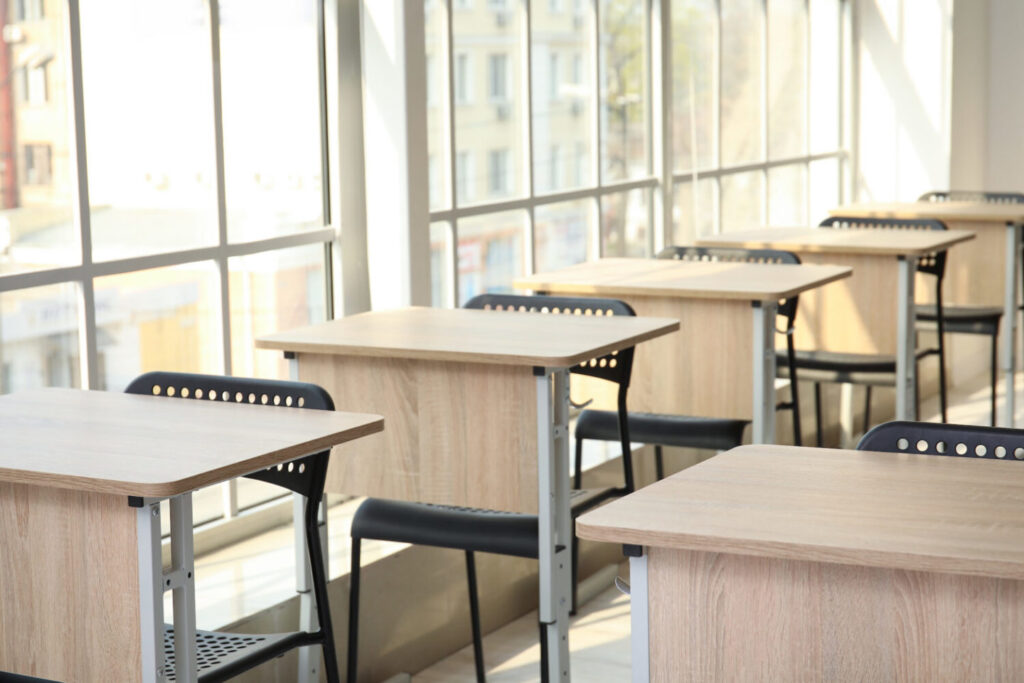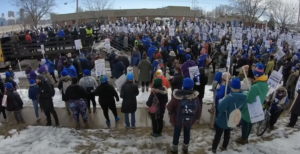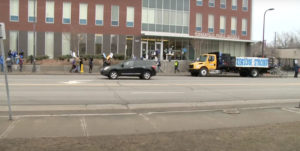Extended school closures pushed by teachers unions created ‘generational learning loss,’ say house panel witnesses
(The Daily Signal) – A generation of American students have fallen behind academically in the wake of the COVID-19 pandemic and the forced school closures that took place during that…

(The Daily Signal) – A generation of American students have fallen behind academically in the wake of the COVID-19 pandemic and the forced school closures that took place during that time.
A subcommittee of the House Committee on Education and the Workforce addressed the problems created by school closures Wednesday in a panel called “Generational Learning Loss: How Pandemic School Closures Hurt Students.”
The subcommittee chair, Rep. Aaron Bean, R-Fla., spoke about how bad COVID-19 policies snowballed into a catastrophe that many parents saw coming:
In only a matter of two years, a generation of progress was lost. The great irony of COVID was how the majority of parents so easily predicted online education and school closures would be detrimental to students and how so many bureaucratic education experts with all the research power in the world took years to reach the same conclusion.
Bean said that the National Assessment of Educational Progress, also known as the Nation’s Report Card, assessed students across the country and found in 2022 that math, reading, and civics scores had plummeted to their lowest point in two decades.
“The mass shuttering of schools throughout the pandemic is one of our greatest education policy failures in our nation’s history,” he said.
Teachers unions in particular prolonged school closures, according to Bean.
“A Brookings Institute study found that school districts with lengthier collective bargaining agreements were less likely to start the fall 2020 semester with in-person instruction,” he said, and further explained that data shows that longer shutdowns were not “predicated on pandemic severity.”
Bean said that not only is it essential to look back at what went right and wrong for schools during the pandemic, but to look into what happened to the $190 billion in federal money spent on education during that time.
Several witnesses in the hearing spoke about how extended school closures created huge setbacks for students that they are still paying for today.
Nat Malkus, senior fellow and deputy director of education policy at the American Enterprise Institute, said that extended school closures had the largest impact on education outcomes and that policymakers largely had control over these decisions.
Furthermore, he explained that most opening and closing decisions were political, as decisions to open or stay closed had no correlation with the number of COVID-19 cases per capita, but a strong correlation with the dominant political party in the education district, with Democrat districts far more likely to have extended closures than Republican ones.
This had a huge and disparate impact on school outcomes, Malkus said.
“The third of districts that were most in-person in 2021 lost 44% of a year’s progress in math, the most remote third lost over 60% of a year,” he said.
According to Malkus, extended remote learning wasn’t the only cause of students falling behind. He said that “the instability of quarantines, spikes in chronic absenteeism, disruptions in learning all hampered teacher capacity and student learning.”
Derrell Bradford, an education policy expert and president of 50CAN, an organization that advocates at the local level for educational reforms, spoke about how teachers unions played an outsized role in extended school closures.
Bradford said that it’s “sophistry” to suggest that teachers unions had no role in keeping schools closed longer than they had to during the COVID-19 pandemic. He said that the prolonged shutdown of schools was triggered by a series of “labor actions” starting in Kentucky and Oklahoma that really “blew up” in Chicago and Los Angeles during the Democratic presidential primaries.
The education expert said that these strikes were for pay increases.
“Teachers unions saw this as a once-in-a-lifetime opportunity to get teacher pay on the federal balance sheet,” Bradford said, referring to the opportunity of the COVID-19 pandemic and all of the extra “emergency” funds coming from Washington to assist schools.
Bradford explained that he had initially been for school closures in the opening days of the pandemic, but the effects of the long-term school lockdowns have been disastrous.
“Twenty years’ worth of learning has been erased,” Bradford said of schools in New York. “This is a generational tragedy.”
He spoke about how emergency federal funds for schools had been spent and pointed to a report in The New York Times: “In Klamath County, [Oregon,] they are spending 70% of their relief dollars to buy turf fields, renovate bleachers, build a gym, and resurface a parking lot. … Sadly, what’s been proven is that if you give American schools $190 billion in a black box with no accountability, they’ll spend the money on themselves.”
Bradford continued to say that the school closures and response to COVID-19 were the “biggest policy failure of my lifetime.”



